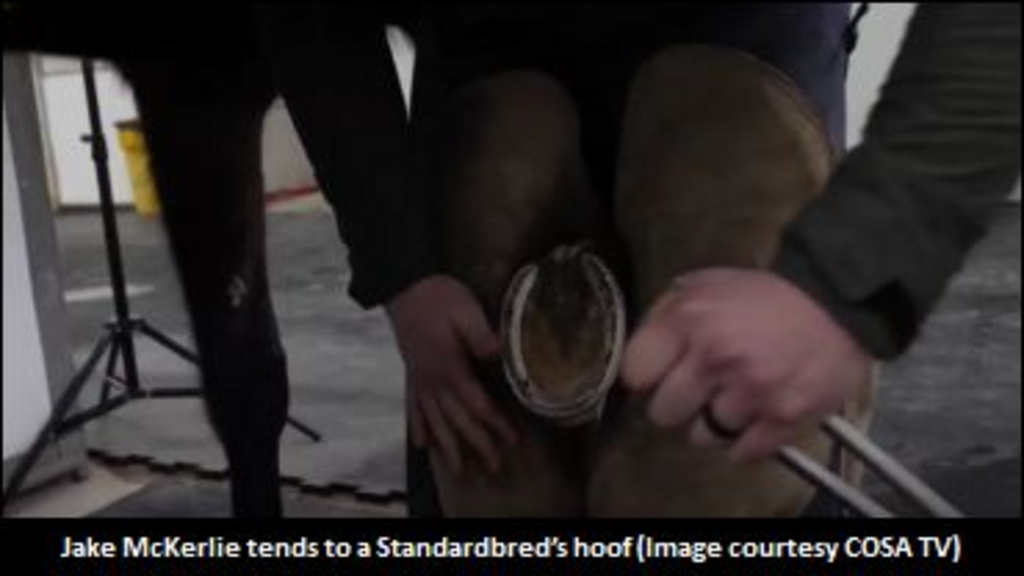
There are many unsung heroes in the sport of harness racing. Trainers and catch drivers definitely get their due. Breeders and owners get their names in the limelight when their horses perform well. The integral role that grooms play has been the attention of increased focus as of late, and rightfully so.
So how about the farriers, or blacksmiths if you will?
Ask any blacksmith and they will espouse you with the importance of shoeing in the success of a racehorse. The men and women that focus on our horses’ ‘kicks’ surely know that they are making a difference with equine careers, but is the average handicapper or race fan aware?
Jake McKerlie, resident blacksmith at The Raceway at Western Fair District and Dresden Raceway, recently took some time to explain the ins and outs of his trade with COSA TV. And to those that thought that shoeing and the role of a farrier is somewhat insignificant when it comes to racing, think again.
“It can be crucial,” McKerlie said, when explaining the importance of shoeing on the outcome of races. “When the track’s turned to ice here (at Western Fair) – it could take place over the course of a couple of hours – the horses that are out and are sharp-shod within that week with nice sharp corks, I mean that could win you the race at 30-1 just off of that if all the others are slipping and having trouble getting a hold (of the track).”
When he heads into work, McKerlie obviously knows that he’s going to be shoeing horses. That being said, his workload swings on a day-to-day basis, and the intensity in which he has to perform can be dictated to him at a moment’s notice.
“Normal nights (I’ll do) one to two shoes, but then once a week there will be seven to ten shoes just to make sure I’m on my toes, and maybe one near the post parade just to keep me hopping,” McKerlie said.
“If I could do the same amount of horses shod every single day, my back keeps pretty well. There will be a day of three, followed by a day of ten, and that’s what will really kink you. Doing the yearlings each fall certainly has a little more danger to it.
“I’ve had more than my share of cuts and bumps and broken bones: A shattered kneecap, a couple of broken ribs, broken wrist, a couple of broken bones in the hand, so it certainly takes its toll on you.”
Like almost every individual in the harness racing industry, McKerlie relishes the significant moments in his trade, but it is also the subtle accomplishments of his career – some might describe as the less monumental achievements – that mean the most.
“The best part of the job is doing a job well done,” said McKerlie. “I was really fortunate. I was there shoeing Daylon Magician when he went out and won a million-dollar race in Toronto and when he set a world record over a half. That’s nice, but probably the most gratifying is the horses that nobody remembers. It could be a horse that only made $10,000, but people will tell you ‘the horse will never make it,’ but you know that you can help him out, to get him off cross firing or whatever their issue may be, so horses like that, the little ones, are probably the big rush.”

